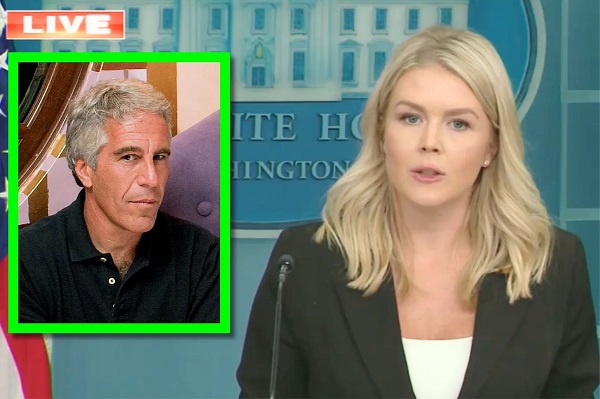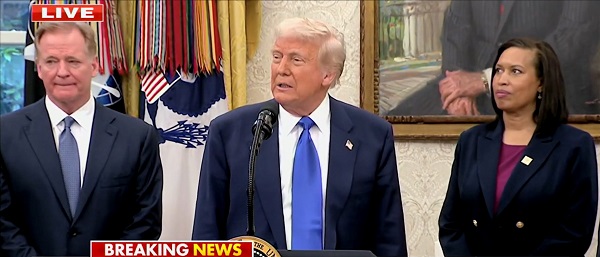Bruce Dowbiggin
Three Books to End the Silence

From the Brownstone Institute
BY
My first thought upon reading it was: I cannot believe that this was allowed to be published! That’s the interesting part. Despite every attempt by the national security state and the vast army of censorial bureaucrats, we still have enough freedom to get the word out, for now.
Think of this. In the time since the Covid crisis has passed, no aspect of any federal power that was deployed to wreck a functioning society has been repealed. Not one law, regulation, edict, or power.
Some courts have struck down certain bureaucratic practices, such as the nationwide mask mandate and the eviction moratorium, which were, respectively, huge attacks on bodily autonomy and property rights. Those were ruled inadmissible, at tremendous expense to plaintiffs.
Otherwise, the bureaucracy has not budged an inch.
At the onset of this disaster, the CDC started simply posting edicts. They started with washing hands and staying home if you were sick. Quickly, they got carried away. Every business needed stay-at-home policies, canceled meetings, posted signs warning of omnipresent danger, sanitizer stations everywhere, no sharing of pens and scissors, plus Plexiglas everywhere.
Any CDC bureaucrat with logins could add a point of “guidance” but for most people, they were law. What a rush for the rulemakers! The edicts were passed on to state health departments, which sent them to counties, and they landed in HR departments in every company. For practical purposes, these were law to most people, because the consequences of disobeying were essentially unknown.
What about now? The CDC simply deleted its webpage. No apologies, no repeals, no reforms, just a delete button. It was there then it was gone.

When first issued it looked like this. A year later, it became a vast machinery of control, as you can see here. With each new update, the screws tightened. (Someone could have a great time parsing every word of every iteration and documenting it.)
Complying with everything would require vast expenditure and a crazed kabuki dance of extreme germophobia, such that it is hard to see how business could get done at all. Every sentence talks of guidance and advice but none cites “science” much less any authority for how any of this was legal. And yet millions of businesses either shut forever or experienced massive financial stress, which hurt everyone. Of course some enterprises thrived: those lucky enough to be considered “essential” and received the bulk of federal funding!
It’s more than obvious that we cannot depend on the federal government to get us to the truth about what happened. Vast amount of content on Brownstone.org explores this daily. In addition there are three books that everyone needs to digest now to get a full sense of the whole. There was much more going on that simple bureaucratic incompetence.
Our Enemy, the Government by Ramesh Thakur is the most scientifically sophisticated and yet accessible account of the amazing screw-ups of public health during this period. Keep in mind that the policy response was mostly the same all over the world but for a few nations. Thakur’s focus is on Australia but people in every nation will recognize the pattern. Each chapter takes on a new element, from the wild exaggeration of the universal threat of Covid, to the faulty testing regime, to the death misclassifications, to the spending mania, to the flurry of insane edicts on masking, vaccination, and forced human separation. It’s a tour de force for the ages, and leaves a devastating impression.
Keep in mind that Thakur is not just some writer. He was once the Assistant Secretary-General of the United Nations under Kofi Annan in addition to being a famed scholar. He has risked everything in writing this book but once he started peeling away at the onion that is the Covid response, he simply could not stop. He had to do the right thing and go the full way. The book is overwhelming in terms of charts, data, evidence, and citations but this is what is necessary to smash the paradigm. His main concern is the health and well-being of the human population. It was this that was wrecked over three years.
Next comes Rand Paul’s Deception. Throughout these awful years, Senator Paul has been an absolute godsend, and for two reasons. He is a medical doctor and extremely smart, so he was never intimidated by Anthony Fauci’s pseudoscientific gobbledygook. He saw right through the guy from the very beginning.
Crucially, as a US Senator, he had unusual access to Fauci that enabled him to question him directly. This is something that Fauci had tried to avoid from the beginning. We know from his email and scheduling that Fauci was extremely careful through the whole period to grant only friendly interviews on captured venues. This was a main objective, and precisely why he got away with it. But with Rand in the Senate, he was entitled to a limited amount of time to ask questions. He used every minute well. The results are gold.
His book is the full account of how Fauci worked from day one to avoid any culpability for the funding of the Wuhan lab through third parties that might have been responsible for the leak of the virus. The book, then, reveals the scandal of the century. Fauci has been enormously powerful, controlling billions in grant funding. He deployed all his power, money, and connections to avoid his direct professional responsibilities and scrub his record to make himself unaccountable. Rand has all the receipts, and bravely presents them in this important book.
To deepen the plot, we have The Wuhan Coverup by Robert F. Kennedy, Jr. This is a much more focused and tighter work than his previous book on Fauci. I swear that anyone who grabs it and reads it will never think about government the same way. It’s that powerful and comprehensive. At issue for Kennedy is the US bioweapons program that began after the Second World War and continues to this day. It is responsible for vast corruption, the empowerment and entanglement of pharmaceutical companies, and the use of secretive classification powers to keep the American people in the dark.
If you suspected that the national security apparatus had some role in the pandemic response, you would be correct about that. This book is the one that has gone further than any other to document this scary reality. The Department of Defense and the CIA had a huge role in making rules for the rest of the population to prepare the way for the presumed antidote that was rolled out with tax funding and legal indemnification against harms, by companies that owned the patents and had publicly traded stocks you could buy. Nothing about this whole machinery has anything to do with things like freedom and democracy but there it is, malicious corporatism in a nutshell.
RFK has laid it all out in eye-popping page after page. My first thought upon reading it was: I cannot believe that this was allowed to be published! That’s the interesting part. Despite every attempt by the national security state and the vast army of censorial bureaucrats, we still have enough freedom to get the word out, for now. This is why it is so important to get this book now and digest its contents. There could come a time when we won’t be allowed to read such things. That is clearly the ambition in any case.
Did the pandemic response affect your life? Your kids? Your community? Yes, and profoundly. As a citizen you have every reason to care about how and why terrible things were done to us.
It’s not enough just to forget the whole thing like a bad dream. We cannot just delete the page from the history books, as the CDC has done, and pretend like it is over and done and nothing needs to change. We must deal with reality. And these books take us to new levels of understanding. That is the first step toward change.
Bruce Dowbiggin
The Covid 19 Disaster: When Do We Get The Apologies?

Breaking: Drs. Bonnie Henry and Theresa Tam have been appointed to the Order of Canada in recognition of their role in the country’s response to the COVID-19 pandemic.
And so the game of covid liar’s poker has more winners. It’s like awarding the captain of the Titanic the Nobel Prize for his work on floatation. As we now know these two— and the other WHO finger puppets in Canada— made the Covid 19 episode worse, not better, with their prescription for panic, positives and punishment. Even as they knew the truth about the limits of the virus and the efficacy of vaccines they continued to spew fallacious PCR data on the extent of the sickness and who was at risk.
Put simply, to protect vulnerable seniors they said kids were also at great risk. Which was unconscionable.
In this they encouraged Justin Trudeau in his worst instincts, combining his father’s insouciant disregard for civil rights (sending in the police) with his mother’s mental stability. Propped up by Team Tam and its U.S. allies such as Anthony Fauci, this hysteria peaked with a sequestered PM crushing the Truckers Convoy’s vaccine protest with emergency measures and destruction of civil liberties.
Lest you wonder, this overreach was recognized at the time. Justice Maclean wrote at the trial of Convoy organizers, “Defendants & other persons remain at liberty to engage in a peaceful, lawful & safe protest”. On Feb. 16, he continued a no-honking order, again writing: “Defendants & other persons remain at liberty to engage in a peaceful, lawful & safe protest.”
The leaders of the Convoy, lynched by Canadian media’s phoney claims of right-wing American interference, are still fighting jail time on charges of nuisance. While violent criminals are routinely released on bail or absolved.
Justice Richard Mosley later concluded that while the convoy was a disruption of public order, it didn’t constitute a national emergency and invoking the act “does not bear the hallmarks of reasonableness — justification, transparency and intelligibility.” But in real time Team Tam made no attempts to correct the wilder misgivings about Covid (lockdowns, mandatory vaccines). Trudeau was given a hall pass. Needless to say the purchased media made things infinitely worse regurgitating these mistakes.
In short, they knew better but hid the truth. But why pick on Henry and Tam? Under Trudeau and his wingman Jagmeet Singh this was the golden age of lies and prevarications in Canada and the U.S. No apologies were ever offered when the truth emerged.
As we’ve noted before, Trudeau cried with a teddy bear carefully positioned over 751 alleged unmarked graves in a known Catholic cemetery that the local Cowessess band abandoned. The Liberal government knew the claim of 215 “children’s graves” was false, and still ran with it to get Trudeau his photo-op. Naturally the CBC Media Party played (and still plays) accomplice in this farce as the Canadian flag was lowered to half-mast for six months and Trudeau ratted out Canada at the UN as a genocidal state.
There were more, plenty more Trudeau scandals that media endorsed and then stood by even as the truth was revealed. SNC Lavalin. We Charity. Arrive Can app. Firing indigenous justice minister. Chinese drug infiltration/ money laundering. Nazi Celebrated in Parliament. Welcome To Canada immigration. Nova Scotia massacre. McKinsey Consultation. Blackface. And so on.
And were there apologies when it came time to make the Trudeau Liberals accountable? No, they staged a media circus over Donald Trump’s assertion of 51st state. All the fake news and deliberate lies went poof, allowing Mark Carney to seamlessly assume the PM job.

Lest We Forget Pt. 2 it was not exclusive to Canada. As we are now learning: Barack Obama and Joe Biden sat in an August 3, 2016 Situation Room briefing and said, yeah, let the highest officials in our administration fabricate evidence to frame the opposing party candidate Donald Trump. Obama. Biden. Comey. McCabe. Strzok. Page. Rice. Etc.
Knowingly using the faked Clinton campaign ‘Steele Dossier’ hoax, they launched a federal investigation into the Trump presidential campaign that lasted three years after Trump was sworn in as the nation’s 45th President. Arresting and jailing his partners and colleagues. Inventing fake stories for their media enablers. Let’s repeat that. Saint Obama knew there was criminal activity in the process but let his henchmen try to fix an election.

And when the ruse was uncovered no one apologized. No one in authority was fired or jailed. The Pulitzer Prizes awarded to the NT Times and Washington Post for disseminating the DEMs scandal were not rescinded. Nor were they given back by the lying newspapers.
The concerted frauds of the same U.S. DOJ, FBI and State Departments were fed by media and accepted by gullible publics in Canada and America. The fantastical 2020 election results were likewise drummed into the public irrespective of the sudden “appearance” of 27 million new votes during a pandemic.
It was all a fitting preamble to the 2020-2024 Biden senility scandal with Democrats running a man they knew was in full dementia. In the 2020 election Biden was hidden from public view, the better to let media attack Trump for spurious charges launched by partisan DNC attorneys in Georgia, New York and DC. Even then it took the suppression of Hunter Biden’s incriminating laptop just prior to the election to get his father elected.

The dance of denial continued in Biden’s term as he physically and mentally deteriorated before the American public. But inquiries about who was running the government if not Biden were harshly suppressed. Media lackeys noted he was sharp as a tack mentally and in tip-top physical condition when he wasn’t falling down stairs.
It took the stunning 2024 debate debacle with Trump to strip away the lies about Biden’s health, now said to be advanced prostate cancer and Parkinson’s. The media, caught in their own lies about Biden’s condition, offered no apologies and tried to blame Biden’s stutter for the performance.. Right.
These were the two greatest U.S. hoaxes from people who’d cried hoax incessantly. They were hardly the only abuse of public trust. Some of the perpetrators are said to now be under investigation— even as they hand out awards to each other. The media’s credibility is shattered and yet they still blame others. Jaded voters are taking a “we’ll see” approach. But expectations of any change in DC or Ottawa are limited.
As Stephen Taylor posted on X: “Turns out for Liberals, ‘elbows up’ just means ‘noses up’ like it always has.”
Bruce Dowbiggin @dowbboy is the editor of Not The Public Broadcaster A two-time winner of the Gemini Award as Canada’s top television sports broadcaster, his new book Deal With It: The Trades That Stunned The NHL And Changed hockey is now available on Amazon. Inexact Science: The Six Most Compelling Draft Years In NHL History, his previous book with his son Evan, was voted the seventh-best professional hockey book of all time by bookauthority.org . His 2004 book Money Players was voted sixth best on the same list, and is available via brucedowbigginbooks.ca.
Bruce Dowbiggin
Eau Canada! Join Us In An Inclusive New National Anthem
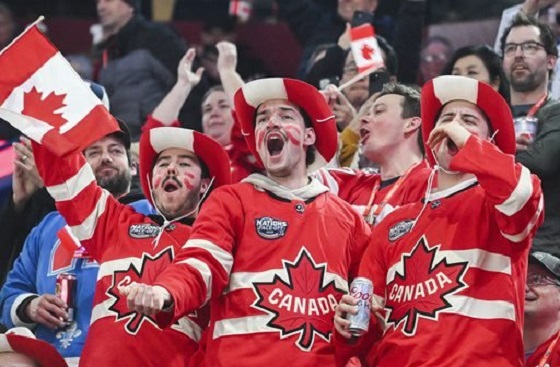
This past week has seen (some) Canadians celebrating their heritage— now that Mike Myers has officially reinterpreted Canadian culture as a hockey sweater and Mr. Dressup. This quick-change was so popular that Canadian voters even forgot an entire decade of Justin Trudeau.
In the United States, the people who elected Donald Trump– and not Andrew Coyne– to run their nation celebrated Independence Day with stirring renditions off The Star Spangled Banner, although few could surpass the brilliant performance of the song by the late Whitney Houston at the 1991 Super Bowl.
The CDN equivalent is some flavour of the month changing the words to O Canada at the Grey Cup game. Canada’s national anthem has always been open to interpretation by people who may or may not have Canada in their hearts. At the 2023 NBA All Star Game Canadian chanteuse Jully Black became the latest singer to attempt a manicure to the English lyrics of O Canada, penned for the 1880 Saint-Jean-Baptiste Day ceremony ( Calixa Lavallée composed the music, after which words were written by the poet and judge Sir Adolphe-Basile Routhier. The English lyrics have “evolved” over the years, just like the dress code for the CDN PM..)

Black amended the first line from “our home and native land” to our home ON native land”. Because something-something. But this creative license is nothing new. Unlike Chris Stapleton, Marvin Gaye or Whitney Houston with the Star Spangled Banner, interpreters of O Canada have seen fit to amend the lyrics to their sensibilities. Roger Doucet, famed anthem singer of the Montreal Canadiens in the 1970-80s, tried to add the words “we stand on guard for truth and liberty” in place of the first “we stand on guard for thee”.
In 1990, having nothing better to do, Toronto City Council voted 12 to 7 in favour of recommending that the phrase “our home and native land” be changed to “our home and cherished land” and that “in all thy sons command” be partly reverted to “in all of us command”. (The latter was officially adapted.)
While those attempts had mixed outcomes it appears it’s just a matter of time till Ms. Black’s class-conscious culling of the words is accepted. Being generous we here at IDLM thought we’d short-circuit piecemeal attempts to create a throughly Woke version of the anthem that would last till the latest fad come along. Herewith our 2023 definitive O Canada that even— maybe only— Justin Trudeau could love:
“O Canada” (Ignores the French fact in our culture) Change to “Eau Canada”
“Our home on native land” (ignores indigenous land claims) Change to “Get off our land, settlers”
“True patriot love in all of us commands” (Only true patriot love? There were officially 78 kinds of relationships in Trudeaupia. And commanding love?) Change to “Love the one you’re with”.
“With glowing hearts we see thee rise” (rise suggests triumph of white triumphalist dogma) Change to “Non judgementally we oppose the crushing impacts of Euro-based autocracy”
“The true north strong and free” (How can anyone be strong or free when we support America’s killing fields?) Change to “Heteronormative thinking must be stamped out at our borders. If we even have borders anymore.”
“From far and wide” (Body shaming) Change to “Obesity is a disease that is not helped by putting it in the national anthem.”
“O Canada” (biased against A, B, AB blood types) change to “Science Must Be Believed”
“We stand on guard for thee” (Spreads hate against the non ableist community) Change to “Please remain seated.”
“God keep our land” (God? God? What is this, the Reformation) “Change to “It’s your thing”
”Glorious and free” (Glorious harkens to the bourgeois subjugation of Indigenous thought processes by white Christian priests) Change to “A genocidal state if there ever was one”.
“O Canada we stand on guard for thee/
O Canada we stand on guard for thee” The denial of trans rights is used twice here to emphasize the intolerable burdens faced by people of the LGBTQ2R community as they seek respect and compensation for the evils of the founding oppressors.) Change to “Eau Canada, after 6.5 hours of intensive lectures on the gender, race and dissociative application of class war on your citizens you may someday come to understand that this song is a manifestation of your bigotry and exploitation of minorities— and why rhyming lines like “thee and free” is the work of the devil or J.K. Rowling, whomever comes to mind first.”

There. That wasn’t so tough, was it? Flows trippingly off the tongue like Mark Carney refusing a special inquiry into China buying the electoral process. Or perhaps we should simply accept a literal translation of the original French lyrics:
“O Canada!
Land of our ancestors
Glorious deeds circle your brow
For your arm knows how to wield the sword
Your arm knows how to carry the cross;
Your history is an epic
Of brilliant deeds
And your valour steeped in faith
Will protect our homes and our rights.”
Yikes. That’s downright fascistic. But it’s Quebec, and we have to allow them their peccadilloes. So circle your brow with glorious deeds, grab a cross and a sword and valour steeped in faith. And remember we must be adaptable in the new era.
Unless it’s Alberta using the adapting to fuel its CO2-belching machines. In which case it’s man the battlements and follow Mike Myers into the fight.
Bruce Dowbiggin @dowbboy is the editor of Not The Public Broadcaster A two-time winner of the Gemini Award as Canada’s top television sports broadcaster, his new book Deal With It: The Trades That Stunned The NHL And Changed hockey is now available on Amazon. Inexact Science: The Six Most Compelling Draft Years In NHL History, his previous book with his son Evan, was voted the seventh-best professional hockey book of all time by bookauthority.org . His 2004 book Money Players was voted sixth best on the same list, and is available via brucedowbigginbooks.ca.
-

 Uncategorized13 hours ago
Uncategorized13 hours agoCNN’s Shock Climate Polling Data Reinforces Trump’s Energy Agenda
-

 illegal immigration2 days ago
illegal immigration2 days agoICE raids California pot farm, uncovers illegal aliens and child labor
-

 Frontier Centre for Public Policy13 hours ago
Frontier Centre for Public Policy13 hours agoCanada’s New Border Bill Spies On You, Not The Bad Guys
-
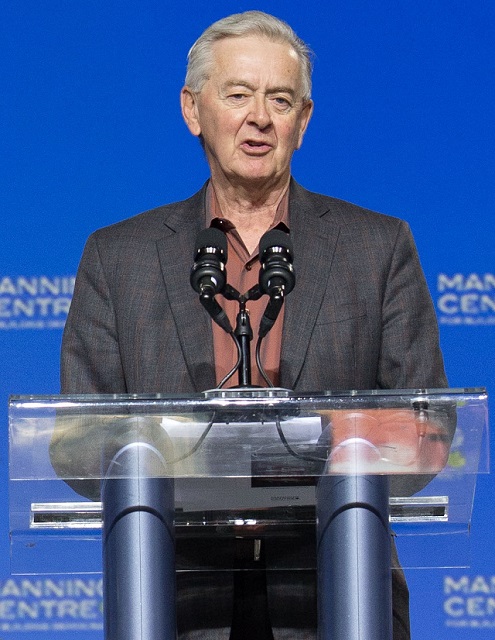
 Opinion6 hours ago
Opinion6 hours agoPreston Manning: Three Wise Men from the East, Again
-

 Addictions5 hours ago
Addictions5 hours agoWhy B.C.’s new witnessed dosing guidelines are built to fail
-
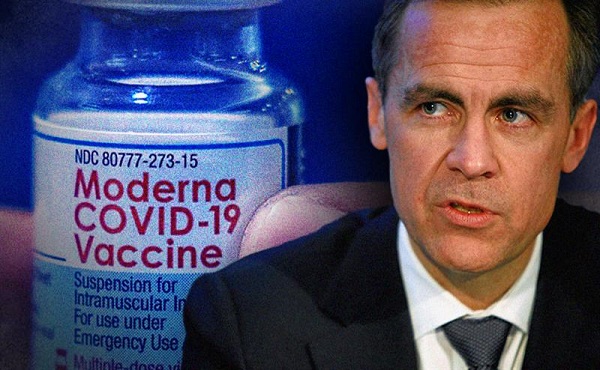
 Business3 hours ago
Business3 hours agoCarney Liberals quietly award Pfizer, Moderna nearly $400 million for new COVID shot contracts
-

 Energy1 day ago
Energy1 day agoLNG Export Marks Beginning Of Canadian Energy Independence
-
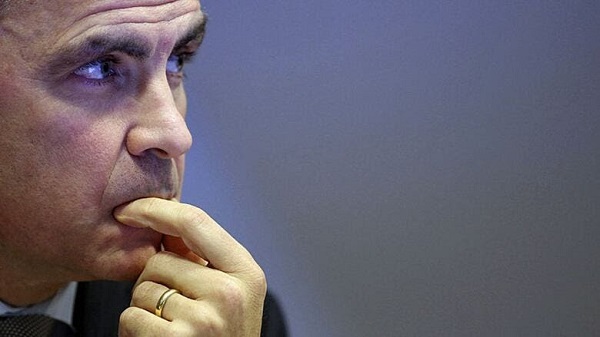
 Business1 day ago
Business1 day agoCarney government should apply lessons from 1990s in spending review


